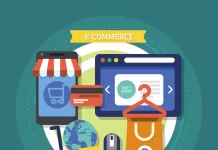Are you thinking about starting an ecommerce business? There are many benefits of ecommerce. Online shopping has successfully integrated itself into nearly every facet of modern life, with customers being able to purchase almost anything off the internet and have it shipped directly to them with just a few clicks of a button. However, despite the growing importance of e-commerce in the modern economy, many professionals from all walks of life are still unfamiliar with the rules and trends that are coming to shape the contemporary business world.
For those who don’t want to be left behind by changes in the e-commerce industry, here are 8 e-commerce trends to be aware of, and how they will continue to drive the digital economy into every corner of our lives.
1. Continued importance of mobile devices
Mobile phones and tablets have long been important parts of everyday life and business alike, but we can expect them to take on a renewed significance this year. More e-commerce businesses are realizing that if they’re not luring in mobile customers they’ll struggle to make any profit whatsoever. This is leading e-commerce web design into a pro-mobile direction. Immensely popular e-commerce giants like Shopify are already issuing guides on how to be accessible on mobile devices because they understand that modern entrepreneurs who can’t cater to the smartphone generation are unlikely to ever succeed.
2. Chinese e-commerce giants rising
Another e-commerce trend that is becoming readily apparent is that the Western monopoly over the digital age is quickly coming to an end. Chinese e-commerce giants are rising at just as rapid a pace as their American and European counterparts, with online retailers like Alibaba’s luring in countless customers who want the convenience that digital shopping offers.
This means that future e-commerce operations will have to think about the international market much more than they previously did and that innovation and regulation in the e-commerce industry will steadily migrate away from the West and towards emerging markets.
3. Direct contact with consumers
One of the most obvious trends over the last few years has been that e-commerce businesses are moving towards direct outreach to customers instead of relying on third-parties or advertising campaigns. Manufacturers, for instance, are waking up and realizing that they can skip the middleman altogether and pitch their products directly to customers, rather than finding expensive retailers who would make their products more expensive for end-consumers. Brand manufacturers, in particular, are going right to customers with impressive marketing pitches and enticing prices that are too good to pass up.
4. Drop shipping is still viable
Despite criticisms of the drop shipping model, it’s becoming apparent that businesses still find it to be a viable means of turning a profit. Online training from sites like learning.chaptersc.com has made this simple and retailers are discovering that they can significantly cut the costs of doing business by allowing a third-party to manage their inventory for them. This method moves away from traditional business models that have high overhead costs, which are simply unacceptable in the e-commerce industry.
5. Social selling sites remain vital
While some have been worried that digital disruption will end the importance of social selling sites like Instagram, the e-commerce industry will likely continue to find such services imperative. The popular social media site, which is owned by the even bigger behemoth Facebook, has recently taken steps to introduce a new “stories” feature which enables brand influencers to peddle even more products to their fawning followers.
This is also indicative of the fact that personality will continue to be a vital part of the e-commerce industry throughout 2020. As long as influencers can market their personalities as a basis for scooping up new products or services, e-commerce businesses will continue to find influencer-heavy platforms like Instagram essential towards shaping the future of the industry.
6. Disruption of existing e-commerce models
While eCommerce operatives have frequently enjoyed being the ones who get to disrupt other industries, the rise of alluring new services are challenging traditional online retailers.
In established e-commerce areas like the fashion sector, for instance, new ways of delivering products to customers are challenging those who simply want to sell products. Companies like Rent the Runway and Le Tote are enabling consumers to rent clothing options via e-commerce platforms, which means that the future of the e-commerce industry could very well become defined by renting instead of selling in a number of key sectors
7. Amazon growth
One of the most foreboding trends in the eCommerce industry has been Amazon’s ceaseless growth, with the company establishing itself as perhaps the greatest monopolist of our era. E-commerce operatives have been trying to get around Amazon’s business model for years, intent to cut out the middleman and market directly to consumers, but the company’s platform has remained by far the biggest vehicle for e-commerce transactions in the world.
With Amazon continuing to spread into as many industries as possible on its quest to become everything, online retailers that refuse to cater to the company’s whims could quickly find themselves isolated and locked out of the market.
8. The new industrial revolution
The most important trend for e-commerce is that it’s becoming the next industrial revolution, with the industry set on a ceaseless path of growth and innovation. As thorough research from the likes of McKinsey has made abundantly clear, developing parts of the world are latching onto e-commerce as a means of uplifting themselves from poverty. Nations like Indonesia are literally witnessing eCcommerce become the central facet of economic life, with countless entrepreneurs and everyday workers alike starting their own online businesses or finding employment in one. Thus, we shouldn’t expect the e-commerce industry to start slowing down anytime soon.
eCommerce may have had some time to establish itself, but don’t make the mistake of thinking it’s settling down and becoming stagnant anytime soon. As the rest of 2020 unfolds, we’ll encounter even more e-commerce developments that disrupt current industry leaders while propelling new entrepreneurs to the forefront of the economy.
This article was originally published by Business.com
Find a Home-Based Business to Start-Up >>> Hundreds of Business Listings.

















































